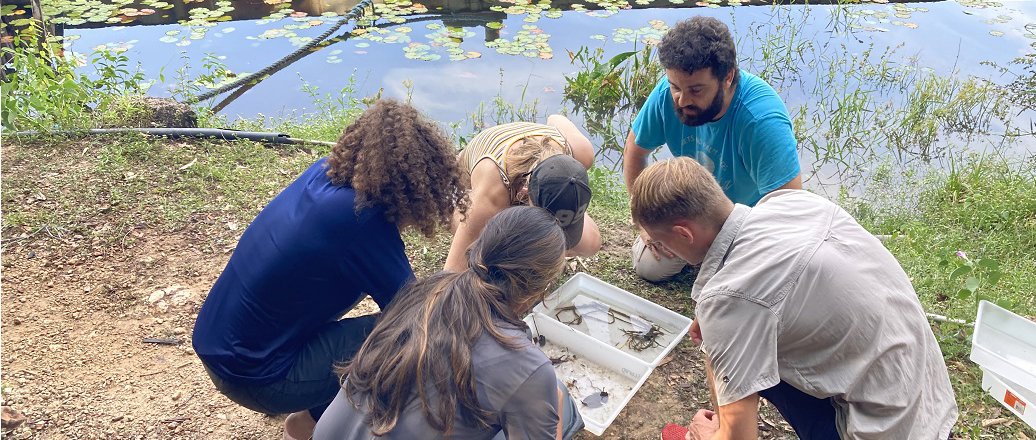After two years of the pandemic, scientific research is gradually resuming its fieldwork and practical activities. A good example of this is the resumption of the Field Course in Tropical Ecology and Biodiversity held by the Brazil-Norway Biodiversity Research Consortium (BRC), formed by the company Hydro, the University of Oslo, Norway, and its Brazilian partners, Museu Paraense Emílio Goeldi, Federal University of Pará and Federal Rural University of the Amazon (UFRA).
Established in 2018, the course is taught by Brazilian and Norwegian scientists with competence in teaching a variety of topics. In 2022, 19 students, eight Norwegians and 11 Brazilians, have already participated in the first stage and are now ready to go to Norway.
“For 15 days, we stayed in the Caxiuanã National Forest, in the municipality of Melgaço, in Pará, mainly developing practices for the conservation of the biodiversity of the Amazon. We observed which animals live in the region, how they are influenced by the river regime, water availability and temperature. The idea is for students to understand how the Amazon rainforest works and how this environment can be protected”, says Rafael Assis, course coordinator and executive secretary of the BRC.
The Master's student in Ecology and Conservation at UFPA, Ingrid Campos, visited Caxiuanã for the first time: “It was an incredible experience! Something I really liked was that, in Caxiuanã, we were able to expand our knowledge about different biological groups, in addition to the exchange of experience with Norwegian students, which was enriching.”
For Manuela Santos, PhD student in the Postgraduate Program in Biodiversity and Evolution at the Museu Paraense Emílio Goeldi (PPGBE, MPEG), the novelty will be the trip to Norway. “The purpose of this exchange is to show us more details about an analysis technique with molecular material and I am looking forward to learning more about it. In addition, we will work on writing scientific articles and I hope to improve my command of English and continue to exchange knowledge with colleagues and professors”, she comments.
The course also includes visits to Hydro's facilities in Brazil. In this edition, they visited Mineração Paragominas. “The idea is to visualize the Amazon after human action and show the areas already recovered and reforested by the company”, explains Rafael Assis. The main objective of the project is to train future specialists in biodiversity, ecology and forest restoration in the Amazon with knowledge and critical sense relevant to future careers in academia, government, NGOs and the private sector.
“This is an initiative that adds a lot to us, both as people and as professionals. Brazil and Norway are very different countries and meeting people who are also working for science on the other side of the planet, with different experiences, broadens our view of the world. In addition, knowing other approaches and scientific research is very important, as well as the unique biodiversity of each of the places. It was something very good in Caxiuanã and I'm sure that in Norway it will be no different”, says Master's student Ingrid Campos.
About BRC
The BRC is formed by the University of Oslo, in Norway, and its Brazilian partners, Museu Paraense Emílio Goeldi, UFPA and Universidade Federal Rural da Amazônia (UFRA), in addition to Hydro. Established in 2013, it was renewed for a further five years in 2018 and maintains a research program connected to Hydro's mining operations. The objective is to invest in research to strengthen conservation strategies for the Amazon fauna and flora, in addition to generating information to support the improvement of forest recovery processes in bauxite mined areas in Paragominas. The BRC already has 26 projects approved and in progress, engaging around 220 researchers from different academic levels and specialists from different biological groups. The partnership has generated dozens of scientific products (articles, master's dissertations, among others), has already resulted in the discovery of 3 new species of fungi, 1 new species of wasp and 1 of stink bug, in addition to 2 national awards (Associação Brasileira do Aluminio and from the Brazilian Society for Ecological Restoration) and 1 international from the International Committee for the Study of Bauxite, Alumina & Aluminum (ICSOBA).
: October 25, 2022







